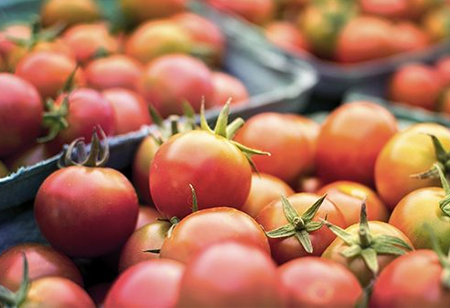THANK YOU FOR SUBSCRIBING
Be first to read the latest tech news, Industry Leader's Insights, and CIO interviews of medium and large enterprises exclusively from Food and Beverage Tech Review
How Food Automation and Robotics Market has been Impacted by Covid-19?
An increasing number of manufacturers focus on dealing with labor costs while enhancing production efficiency and cost-effectiveness. Automation in food production will offer avenues for revenue growth for the long term.

By
Food and Beverages Tech Review | Tuesday, June 02, 2020
Stay ahead of the industry with exclusive feature stories on the top companies, expert insights and the latest news delivered straight to your inbox. Subscribe today.
An increasing number of manufacturers focus on dealing with labor costs while enhancing production efficiency and cost-effectiveness. Automation in food production will offer avenues for revenue growth for the long term.
FREMONT, CA: The food industry has evolved as an essential point in the backdrop of the current pandemic driven factors like hygiene and safety. This factor has resulted in growing discussions concerning the automation across the food manufacturing. The current trend of automation has seen the development of new technologies that can provide end-to-end automation for the production of processed foods.
In the present scenario, the increased use of automated systems can ensure the continued manufacturing and supply of food products, giving restrictions for individual movements. By making sure of the fully automated systems, the risk of foreign contaminants can be minimized or removed and can provide a scope of automated sterilization and disinfection systems.
[vendor_logo_first]The automated systems can also be controlled and monitored remotely. This minimizes the risk by denying the need for individual presence and ensures the factory to operate remotely. This benefits the present scenario as the automated systems aid manufacturers in making the risks of personnel loss or food contamination.
Another emerging trend in the current pandemic is 3D-printed food, which is gaining prominence by promising automated mass manufacturing. While the present crop of 3D-printed foods holds very restricted applications, their scope and use are expected to widen over the next decade with advancements in printing technologies and ingredient integration.
3D technology can be beneficial in the present scenario where the aspect of staying home can help the consumers to print their foods instead of cooking directly. These printers are known to be even more efficient. They can also help even in customizing the ingredient formulations, that can help consumers and foodservice outlets save costs on the raw materials and ensuring the optimal utilization for the final product.
I agree We use cookies on this website to enhance your user experience. By clicking any link on this page you are giving your consent for us to set cookies. More info







